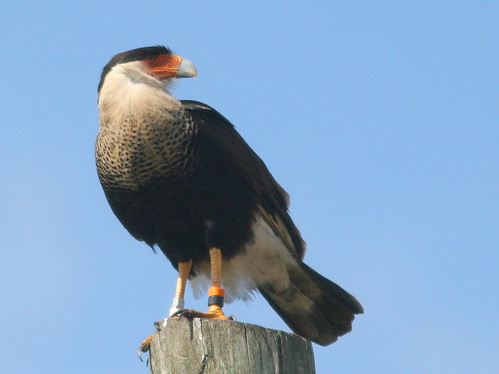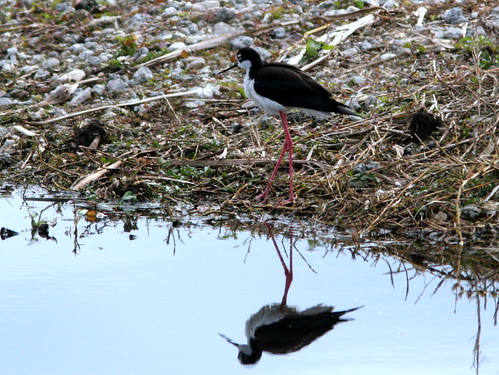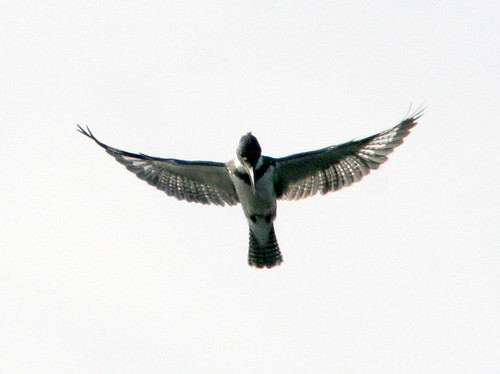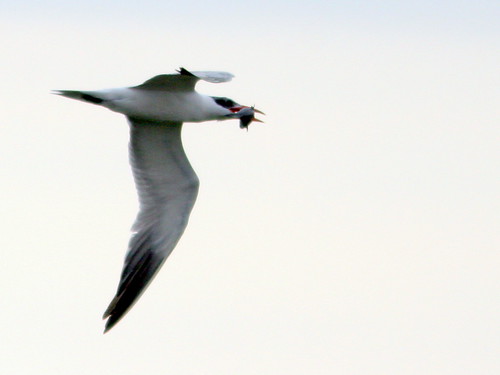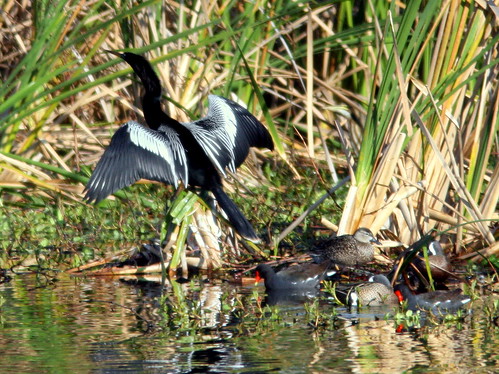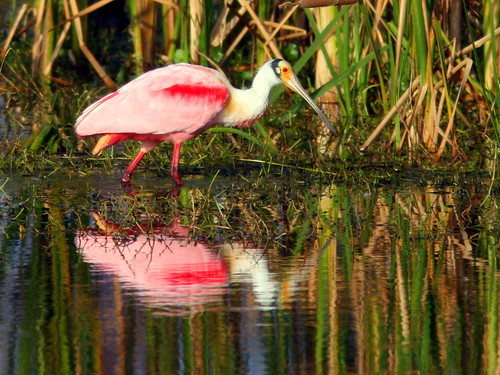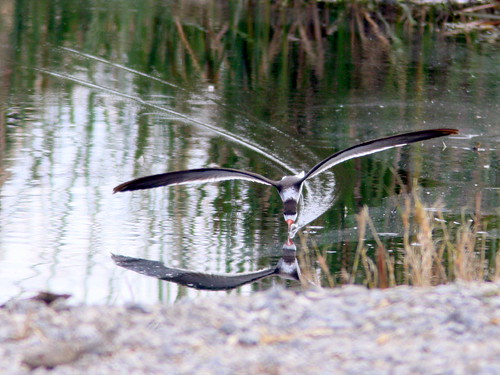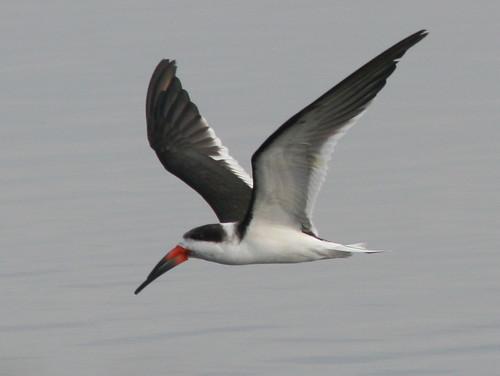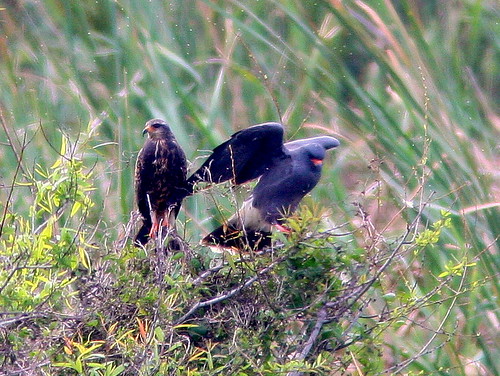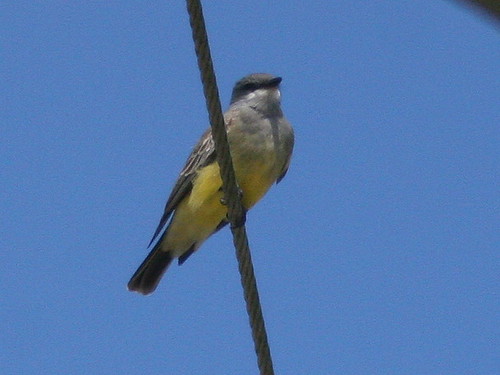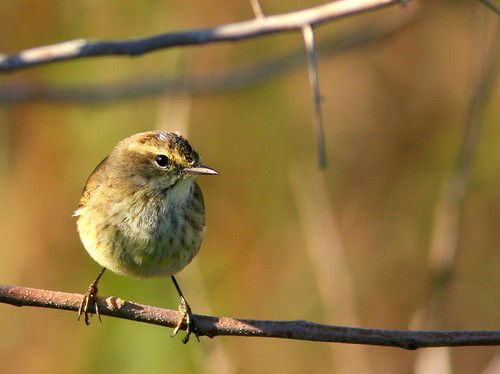Birds and birders flock to water treatment plants. My first experience with one was the sewage pond at Fort Bliss in El Paso, Texas. It was a green oasis in the otherwise arid desert, chock full of shorebirds. It smelled to high heaven!
This one has a modest name, Stormwater Treatment Area Number 5, STA-5 for short, managed by the South Florida Water Management District, and located south of Lake Okeechobee in no-man’s-land of Hendry County. In the middle of the sugar cane fields, STA-5 consists of four large shallow ponds that occupy an area of eight square miles. Audubon of Southwest Florida calls it one of the best birding spots in all of Florida.
Similar to domestic sewage settling ponds, STA-5 receives waste water and allows impurities to precipitate out and serve as food for millions and billions of trillions of microorganisms, algae and water plants. But unlike urban sewer plants, the source of the water is runoff from Florida’s generous summer rains, and the waste is agricultural effluent from the many farms upstream. Fertilizers, pesticides and herbicides dissolved in the runoff are captured and stored before purified water is released into the Everglades. Phosphorus is the main culprit. The Everglades are historically poor in nutrients, and phosphorus stimulates the growth of cattails that overrun the sawgrass that normally carpets the River of Grass.
Although remote and at the end of a mile-long unpaved road, it is rather easy to find, about twenty miles south of Clewiston on otherwise good paved roads. The drive down to to STA-5 is a destination in itself.
A Crested Caracara roosted atop a utility pole:
A large flock of Black-necked Stilts waded in the shallow water of the northeast pond:
One stilt appeared out of place as it rested alone on the shore:
American White Pelicans were everywhere: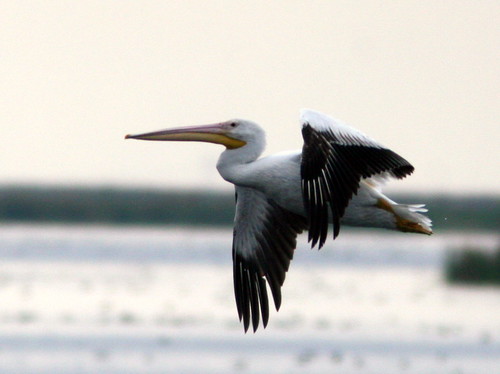
A compact group of Short-billed Dowitchers slept as one kept a wary eye on its surroundings: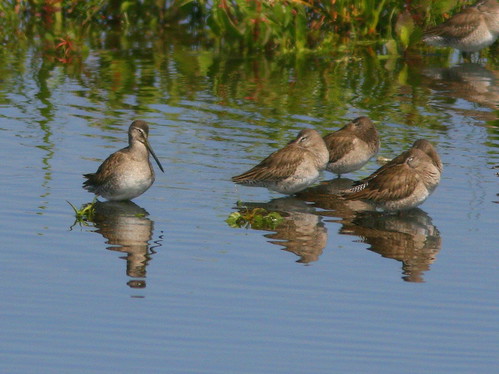
Another dowitcher foraged in the shoals: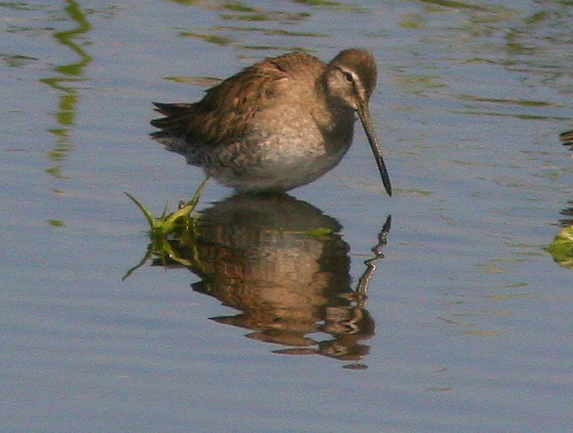
A male Belted Kingfisher dove recklessly from its wire perch after a small fish: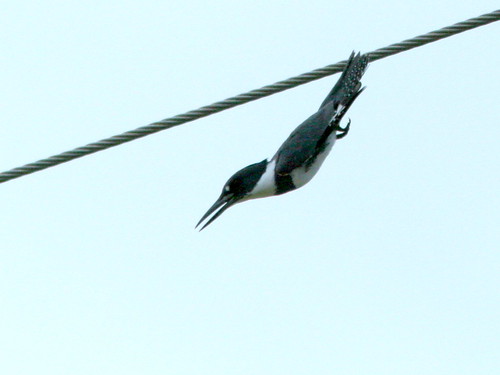
The kingfisher then hovered, hoping for another meal:
It stayed in one spot in the air, the better to see movement in the water below:
An American Bittern was almost invisible against the vegetation as it stood motionless among Snowy Egrets and a Glossy Ibis: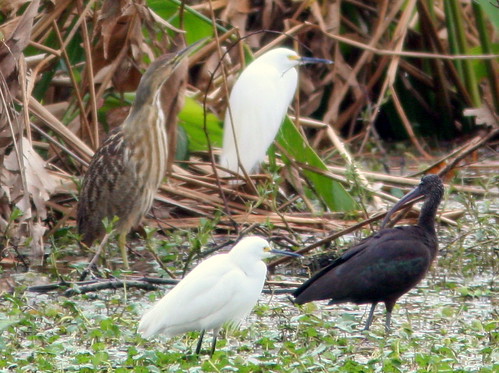
A Caspian Tern, with others of its kind in pursuit, held on to a fish:
An Anhinga dried its wings, surrounded by Common Moorhens and Blue-winged Teal:
A Roseate Spoonbill, one of many at STA-5, cast a colorful reflection:
Nearby, another spoonbill preened: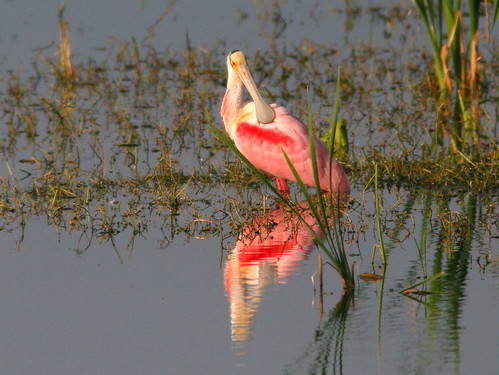
A flock of Fulvous Whistling-Ducks paddled by: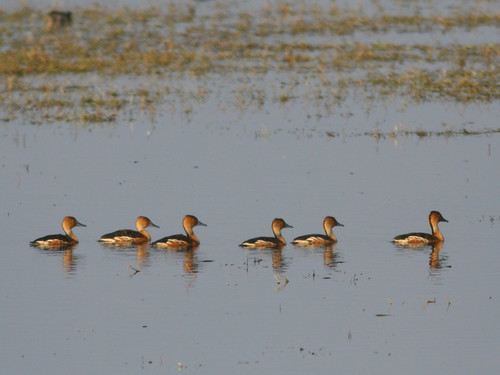
A Black-crowned Night-Heron flew over:
A Black Skimmer created a linear wake, its reflection so crisp that I had trouble telling which side of this photo belonged up:
Another skimmer inscribed a curve in the water:
This skimmer displayed its unique bill in a fly-by:
This photo demonstrated the skimmer’s bill at work, close-up and personal: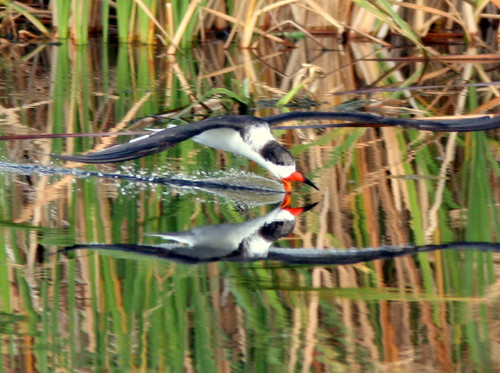
A male Snail Kite hunted for Apple Snails:
This is one of at least two pairs of Snail Kites that were present:
Two Cassin’s Kingbirds, vagrants from the Western US, so common in our New Mexico front yard, caused excitement:
A pair of Western Kingbirds, a species which wanders to Florida more commonly, provided a nice plumage comparison. Note the softer gray on its head and lack of contrast with the light chin: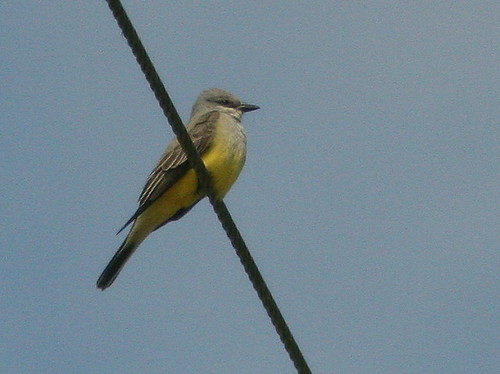

 Bald Eagles usually lay two eggs, but three is not all that unusual. Of 186 Central Florida rural and urban nests studied by Brian Millsap between 1997 and 2001, only three produced three fledglings. Since eggs are laid at 2-4 day intervals, and the female begins incubating as soon as the first egg is laid, the first chick has an age, size and strength advantage of a week or more over the third. Interestingly, the oldest of these three chicks seems to ignore the smallest one, while the middle chick has been aggressive at times. Happily, the parents take pains to see that all three chicks are fed. If food were scarce, the oldest chick would out-compete the smaller chick(s), and they would starve, be forced out of the nest, or even eaten by the larger sibling. For updates on the eagles and information about plans for a sanctuary and nest camera, visit the Nest Watching FORUM.
Bald Eagles usually lay two eggs, but three is not all that unusual. Of 186 Central Florida rural and urban nests studied by Brian Millsap between 1997 and 2001, only three produced three fledglings. Since eggs are laid at 2-4 day intervals, and the female begins incubating as soon as the first egg is laid, the first chick has an age, size and strength advantage of a week or more over the third. Interestingly, the oldest of these three chicks seems to ignore the smallest one, while the middle chick has been aggressive at times. Happily, the parents take pains to see that all three chicks are fed. If food were scarce, the oldest chick would out-compete the smaller chick(s), and they would starve, be forced out of the nest, or even eaten by the larger sibling. For updates on the eagles and information about plans for a sanctuary and nest camera, visit the Nest Watching FORUM.
When I arrived the female was on the nest, feeding the chicks:

I clearly saw all three eaglets. The amount of white down decreases with age. The smallest one was near the adult’s foot, and the oldest was in the center:

The chicks watched as their mother departed:

The
female cleaned her bill and roosted in the melaleuca graveyard. Oh the
joys of motherhood! — her plumage is soiled with fecal matter:

The middle chick flapped quite a bit:

This seemed to annoy the oldest chick, who popped up and bit him on the wrist:

Then, the male parent came in with unknown prey and spent a lot of time feeding the chicks. Note how the tree trunk is “painted” with excrement, as the chick learn to expel wastes over the edge of the nest (too bad that mom was in the way):

The male flew over to the melaleucas and joined the female:

In the meantime, Frank Ortis, Mayor of Pembroke Pines, showed up with a reporter and photographer from the Sun-Sentinel. Click here for a video of nest and interview with Mayor Ortis. I fear that this will attract crowds of onlookers:

The Mayor has been very supportive of our efforts to protect the local eagle nest from undue disturbance, including development of an eagle protection ordinance, and he plans to officially designate the eagle’s nesting area as a City sanctuary:

Posted by: Ken @ 10:15 am
On a cool and clear morning, a view to the north on the 196th Avenue levee that borders the West Miramar Environmentally Sensitive Land (ESL), my birding “patch:” [Click on photos to select larger images]
When walking in wild places, it is best to expect the unexpected. More often than not, whether searching for a goshawk in the mountains of New Mexico, the Red-headed Woodpecker in my favorite birding patch in Illinois, or a Cottonmouth in the wetlands next to my Florida home, my quest eludes me. Therefore, I keep an open mind and just wait for each new day’s surprise.
By South Florida standards, yesterday morning was another in a string of unusually cold days. The temperature was in the low forties, and a brisk breeze blew in from the north. Insects were inactive in the cold. Tree leaves and grasses were swaying, making it difficult to detect subtle movements that might betray small creatures hiding in the foliage. Not a good day for finding birds and butterflies.
My first stop, as usual, was a patch of mostly exotic shrubbery at the edge of our subdivision, happily left undisturbed by the landscaping contractors. It was decidedly “un-birdy.” Even the usually reliable mockingbirds and gnatcatchers seemed to have shunned it. Then I saw a flash of bright red in a weedy patch just to my left. Too small for a cardinal. It had to be a male Painted Bunting, the only other bird I could expect to see sporting that color. So far, I had never seen a male bunting here, and that would be a nice find. This turned out to be the first of two surprises.
After some searching, I located the bird, peering out at me from its hiding place. Although I have much better photos of the species, this one is special, as it captures that moment:

Then, I moved to this flooded thicket nearby, where I can usually find a pair of wintering Swamp Sparrows:
This time, I caught only a fleeting glimpse of one Swamp Sparrow. A couple of weeks ago I did a little better:
As I walked south down the levee, a few Palm Warblers worked the low branches:
A cardinal sang as if spring had already arrived:
A Blue-gray Gnatcatcher finally put in an appearance: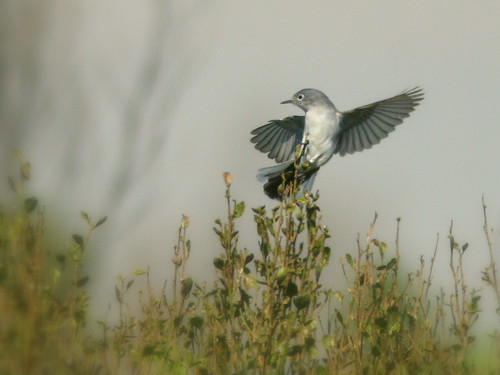
This Loggerhead Shrike, another study in shades of gray, allowed me to approach quite closely:
Many robins flew overhead, northbound. What appeared to be a cloud of smoke in the distance turned out to be a huge flock of Tree Swallows, rising from an overnight roost, spinning in a vortex like a tornado:

As I scanned the open wetlands in hopes of finding raptors, I glanced up the path and was startled to see the dark shape of a Bobcat, only about 50 feet away:
This was my fifth Bobcat sighting in this area, and by far the best photo opportunity. From the shape of its face and rather slender build, I believe it to be a female. Usually Bobcats are loners, but do get together during breeding season. This site is about 1/2 mile from where I saw and photographed two Bobcats just a month ago (See: http://blog.rosyfinch.com/?p=274
The cat sat down and just stared at me for about a minute, until I looked down to check the camera settings, when it melted into the underbrush:
Posted by: Ken @ 9:11 am
Observers of our local Bald Eagle nest have noted some interesting behaviors. These are personal discoveries. They gain insights into the lives of these magnificent birds, and it matters not that their findings are not new to science.
We learned that, unlike many other birds, the eaglets do not abandon the nest after learning to fly. After their first flight, the adults coaxed the fledglings back to the nest with food. The youngsters returned to be fed at the nest daily for two full months. Sometimes one or both would follow the parent as it carried prey back to the nest. See: Chuck Wagon for Bald Eaglets
They witnessed interspecific competition, as, for example, when an Osprey, probably distressed after an eagle had stolen its fish, chased the larger raptor back to its nest. The eagle did not endanger its chicks by allowing its pursuer to make a close approach. Instead, the eagle flew off until it eluded the Osprey, then returned to feed the fish to the eaglets.
They saw how smaller birds will harass the eagles that roost in their territory by “mobbing” them until they depart. For a video and my photos of grackles ganging up on an immature eagle, see Mob Attacks Eagles.
As a mockingbird attacked an adult, Tom Mitchell captured this striking image, which is used with his permission:
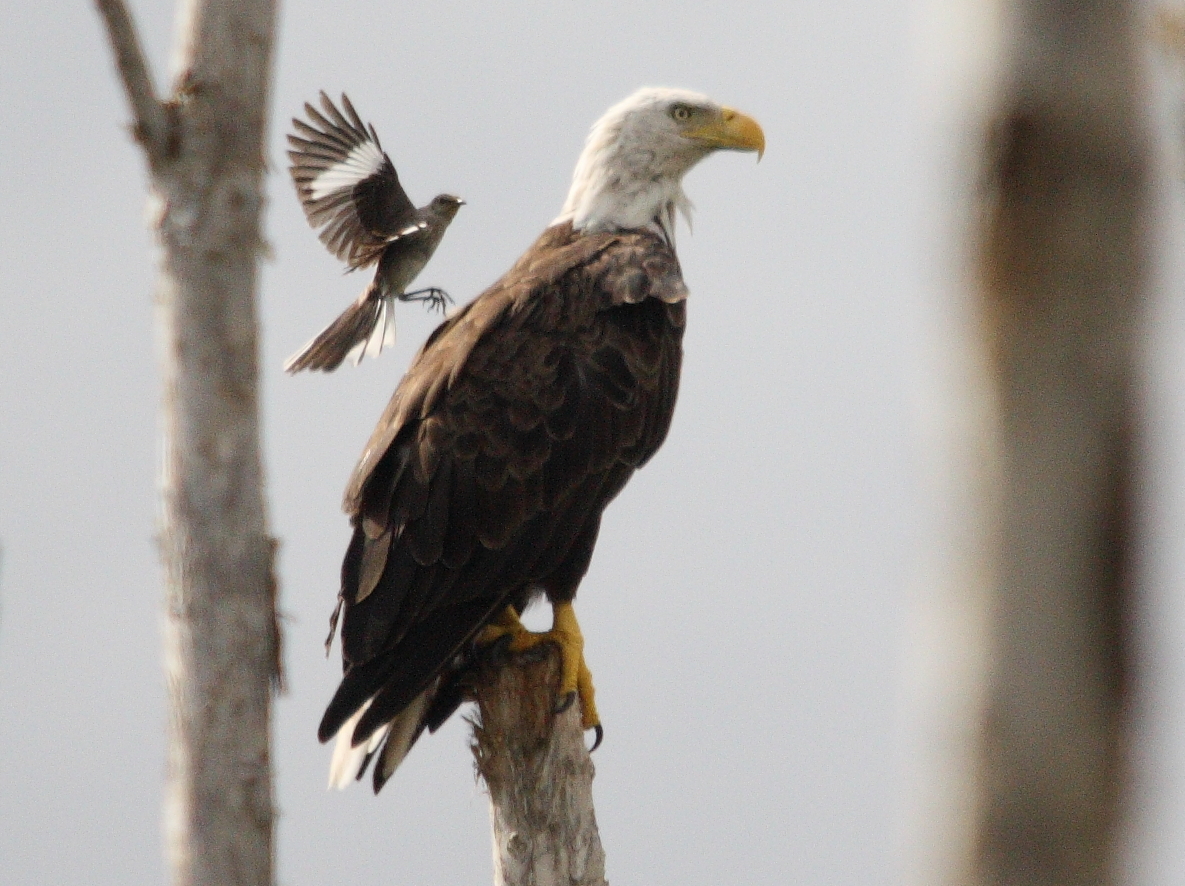
(c) Tom Mitchell 2010
Nest observers followed as the eagles rebuilt their nest this past fall. It had been reduced by summer storms to less than half its size since their last two chicks (“Hope” and “Justice”) departed. Indeed, the birds continually add to their nest, even while incubating the eggs, and especially after the young birds hatch. They often bring in fresh vegetation, including grass picked up from a nearby pasture, to add to the lining of the nest– the avian equivalnt of “sweeping the dirt under the carpet.” We think they may be covering prey remains, or trying to reduce fly infestations.
Major events in the lives of these eagles are recorded on a spreadsheet, with a current report (PDF) which may be viewed at this link. Data for the current 2009-2010 breeding season reveal that nest building began on September 23, 2009, three months before the first egg was laid, on December 18. During the 35 days of incubation, and for about two weeks after the first chick hatched, both birds took turns sitting on the eggs and brooding the eaglet(s) [we have not yet seen them above the nest rim, so we do not know the number], never leaving them uncovered for more than a minute or two. Now, as the young develop to ability to control their own body temperature, they are being left uncovered for longer periods.
Yesterday, Mary
Lou and I arrived 8:50 AM to find one adult on the nest. For the entire
time we watched, until about 9:45, we saw no other adult. Note that the bird now sits higher than when the eagles were incubating eggs, a sign that it is sheltering one or more chicks:
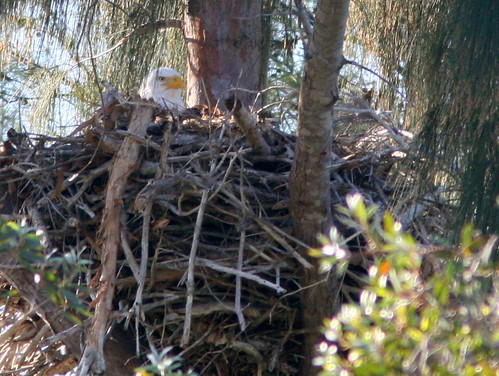
We
confirmed it was “Brown-tip,” the male. He got his name because his right outermost tail feather has a dark tip, unlike the pure white tail of his mate. Otherwise similarly feathered, the members of the pair are also differentiated by the greater size and bulk of the female, whose bill is also marginally fatter at its base.
Around 9:10 AM,
the male eagle flew into the patch of dead melaleuca trees just west of the nest, and roosted, for about 5 minutes. Note the brown tip on his outermost right tail feather: 
He then took flight, coming towards Pines Boulevard quite low, just over the power lines.



He flew to one of the Royal Palms on the north side of the highway at the cow pasture, and tore off some dry foliage near the trunk at the base of the crown:

Instead of returning to the nest, still clutching the vegetation in his talons, he flew directly to a dead tree in the cow pasture across from the High School:

He then forcibly grabbed a small branch (sorry for the poor focus, though I did get a sharp view of the High School), which did not separate from the entire dead and brittle limb:

Instead, the branch broke off near the trunk, and was too large for the bird to carry. He held on to it as it began to fall, but had to let go before it hit the ground. In this shot, the branch is still falling. You can see the large diameter of the broken-off stub on the tree by comparing this to the photo two frames above this one: 
He returned to the nest “empty-taloned,” and went on to feed the young some prey that was already in the nest:














